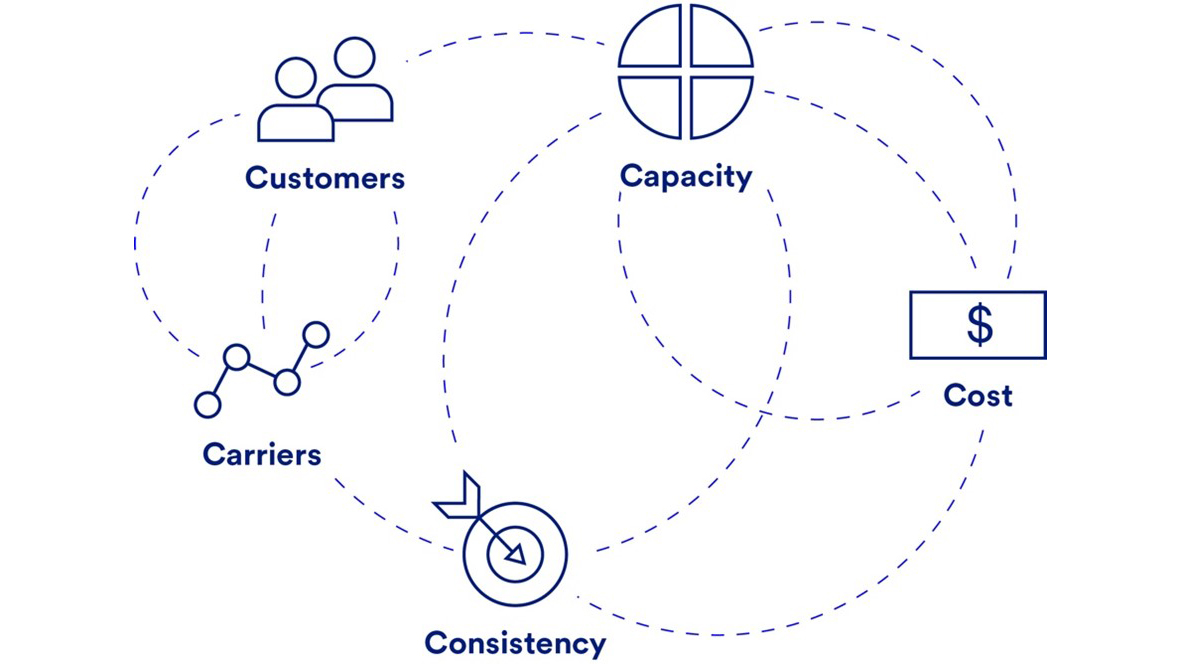Managing the five Cs of small parcel shipping
While challenges often evolve alongside market conditions, these five Cs remain a constant focus for shippers: customers, carriers, capacity, cost and consistency. How do experienced shippers mitigate costs during a time of inflation and strained capacity? And how can they balance meeting demand with delivering on promises to customers?
We explored these questions and give you the answers in these four tips:
1. Listen to your customers’ needs and deliver on them consistently.
Over the past few years, companies across industries have struggled with sourcing and inbound transportation delays. To stay strong, they need to get products out the door quickly. Yet B2C companies face a cost-related challenge: Many consumers expect free shipping; companies trying to charge for it often results in abandoned virtual shopping carts.
At the same time, we’re seeing the consumerization of B2B. Customers now expect the same perks and visibility they get with personal shopping, including fast delivery and online package tracking.
While there’s no easy answer to the B2C challenge – it’s one companies will continue to struggle with – if you service B2B customers, you may have more flexibility. Often these customers are ordering ahead of when they actually need products, so next-day delivery isn’t essential. Make sure you understand their needs, and set expectations, such as 5-day or 7-day delivery. That way you can maintain a clear promise to customers while experiencing significant savings with standard ground shipping.
2. Create strong relationships with carriers through transparency.
Shippers aren’t the only ones experiencing challenges lately. Carriers are stressed, too, with fluctuating fuel prices, driver retention and increased wages. With a potential recession ahead, some people expect freight costs to go down a bit as the capacity situation gets better. Yet others wonder if low unemployment or potential job cuts will make capacity an ongoing issue.
A lot of questions remain, and keeping your relationships with carriers strong may be more important than ever. One way to do this is through forecasting and data modeling. Share transparent data with your carriers, so they understand in advance what capacity you’re going to need. It’s one way to build mutual respect and improve your likelihood of having capacity when you need it, and it may also put you in a better position when you’re negotiating rates.

Manage the five Cs of small parcel shipping
While challenges often evolve alongside market conditions, managing the five Cs of customers, carriers, capacity, cost and consistency, remains a constant focus for shippers.
3. Negotiate rates.
Costs have gone up for everyone lately, and carriers are passing their increased expenses onto shippers. Along with rate hikes, shippers often struggle with peak charges and accessorial charges, many of them unforeseen.
Make sure you have a strong relationship with carriers such as FedEx, UPS and DHL. Some may be willing to negotiate on base rate – especially if you bring details such as your shipping volume to the conversation. While it may be tough to significantly negotiate down a general rate increase, it’s always worth a conversation.
4. Consider alternative carriers to meet cost and capacity challenges.
With peak rates, shortened terms and other challenges emerging during the pandemic, some shippers have explored other options, including regional carriers. In the same way B2C consumers occasionally see packages delivered in personal vehicles – not just mail or UPS trucks – B2B consumers are starting to see more variation in who delivers their goods.
While companies have differing opinions about regional carriers, they may be an option worth exploring as you continue to manage the five Cs.
Want more ideas for managing the five Cs?
U.S. Bank can help you navigate complicated invoicing, identify inaccuracies and cut costs.

